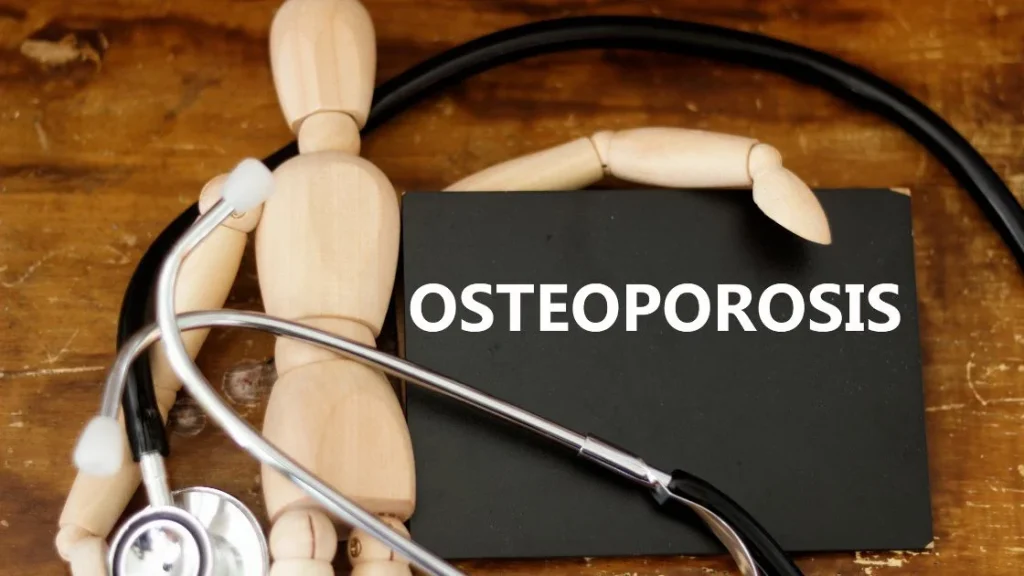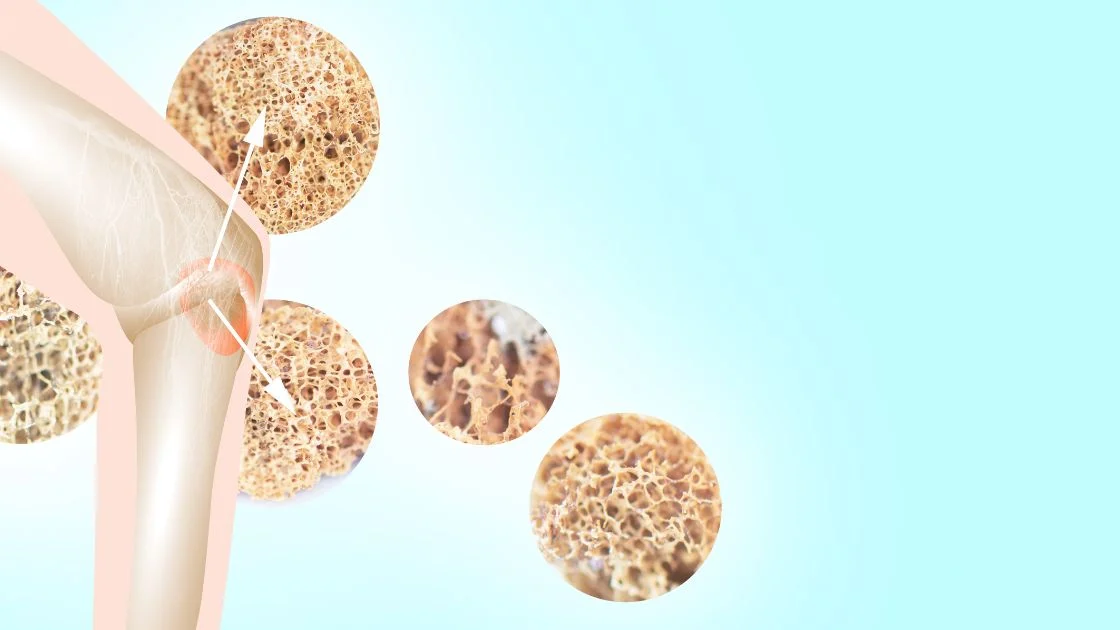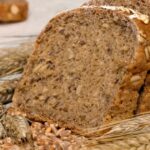54 million Americans have poor bone health.
This is quite a high and worrying number.
Our bones are vital. They protect our organs, allow us to move, and store the nutrients our bodies need.
We are more vulnerable to pain and fractures without good bone health. This can result in other major physical disorders like restricted mobility.
Keep reading and learn about the symptoms, causes, treatment, and everything you need to know about bone health.
Understanding Bone Health
What bone health is?

Our bones naturally weaken and grow less thick as we age. Our bones may occasionally become too brittle and may suffer damage or fracture, even from slight wounds, such as a light fall.
Good bone health guarantees strong, dense bones that will support our entire body.
Why is healthy bone important?
As simple as thanks to them, we can move. They protect the health of our heart, brain, and other internal organs.
Our bones store minerals like calcium and phosphorous that support bone health. Also, they release the minerals when needed by the body for other purposes.
The structure of bones and their function in the body
There are two different forms of bones:
A hard outer layer that is dense, robust, and durable is called compact (cortical) bone. It constitutes the outer layer of bone and represents about 80% of the mass of adult bone.
The other 20% of bone is made up of trabeculae, or rod-shaped structures, and is known as cancellous bone. More flexible and lighter than compact and less dense bone.
Other than that, the bones include:
- Bone osteoclasts, or bone resorption cells, are produced by osteoblasts and osteocytes.
- Bone marrow
- Nerves
- Blood vessels
- Osteoid
- A mixture of collagen and other proteins
- Inorganic mineral salts within the matrix and cartilage membranes, including the endosteum and periosteum.
So what is the function of bones?
The body is made up of and supported by bones, and some organs are also protected by them. They also provide the marrow necessary for the growth and storage of blood cells. Bone also functions as a place to store minerals.
What influences bone health?
The following factors can affect the health of our bones:
- The calcium and vitamin D content of our diet.
- Sex.
- Alcohol and tobacco usage.
- Certain medicines.
- Size.
- Illnesses such as eating disorders and others.
- Age.
- Hormone amounts.
- Family history and race.
- Physical exercise.
Maintaining Bone Health
Foods for strong bones

To increase bone strength, nutrition is essential. You may develop strong bones and preserve them as you age with the support of a healthy, balanced diet.
Calcium and Vitamin D are essential for healthy bones. Vitamin D aids in the body’s absorption of calcium, which is necessary for strong bones.
A subsequent chance of fracturing a bone from a fall is increased by having weak bones. This can lead to diseases like rickets and osteoporosis.
By eating a balanced diet, you ought to be able to obtain all the nutrients necessary for strong bones. So, keep your bones healthy by consuming foods high in vitamin D and calcium.
Exercise and avoiding specific risk factors for osteoporosis are other components of a balanced diet. All these are the foundations for strong bones.
The best diet is one that contains foods rich in calcium such as milk, chard, spinach, broccoli, and grains such as lentils. Foods rich in vitamin D are also essential, such as oily fish, shellfish, liver, and eggs.
Role of exercise in building and maintaining strong bones
A bone is a living tissue that, like a muscle, responds to training by getting stronger. Regular exercise helps young men and women build more peak bone mass than those who don’t.
The finest exercises for our bones are those involving weight-bearing and resistance. Activities that involve bearing weight make us fight gravity. These include stair climbing, hiking, jogging, tennis, and dancing.
Resistance workouts like weightlifting can strengthen bones. Other forms of exercise, including swimming and cycling, can improve cardiovascular health and help maintain strong muscles. However, they are not the best for exercising your bones.
Lifestyle factors that can impact bone health
Insufficient physical activity, smoking, and excessive alcohol consumption negatively affects the health of our bones.
Insufficient physical activity
A body that doesn’t exercise doesn’t strengthen the bones and these will remain weak as the years go by.
Smoking
Studies have shown that smoking decreases the blood flow to many different bodily tissues, not just the bones. Smoking causes osteoblasts, the cells that create bone, to produce less bone because nicotine slows down their growth.
Excessive alcohol consumption
New bone growth may be hampered by alcohol. Loss of bone mass can result in osteoporosis, which causes the bones to become thinner and increases the risk of fractures.
A bad lifestyle definitely has a negative impact on our bones. That is why Gro Harlem Brundtland is right when she says:
Common bone health issues: Osteoporosis & Osteoarthritis
The amount of bone mineral in your bones is known as bone density (BMD). A BMD examination gauges bone health and fracture risk.
If we want to know the health of our bones, by measuring the bone mineral density we will find the answer.
The most common bone diseases are osteoporosis and osteoarthritis.
Osteoporosis

A reduction in bone tissue density is a hallmark of the bone disease osteoporosis. The bones become significantly more brittle as a result.
The likelihood of shattering a bone rises with osteoporosis. In their lifetime, over half of all women over 50 will experience a fracture of the hip, wrist, or vertebra. The most frequent fractures are in the spine.
Osteoarthritis
Osteoarthritis occurs as a result of the deterioration of the protective cartilage that cushions the ends of the bones over time. Millions of people around the world suffer from osteoarthritis, the most prevalent type of arthritis.
Although osteoarthritis can damage any joint, it most commonly affects the hands, knees, hips, and spine.
Symptoms, causes, and treatment options for Osteoporosis
Symptoms of osteoporosis (low bone mass)
Osteoporosis frequently has no symptoms. It is referred to as a quiet disease because of this. Nonetheless, you should be cautious about the following:
- Height decline (getting shorter by an inch or more).
- Positional change (stooping or bending forward).
- respiration difficulty (smaller lung capacity due to compressed disks).
- Fractures in bones.
- Lower back discomfort.
Causes of osteoporosis
There are no causes directly related to this disease but there are some elements that increase the risk of osteoporosis.
How much bone mass you accumulated when you were young has an impact on your likelihood of acquiring osteoporosis. Peak bone mass varies by ethnicity and is partially inherited.
So, it depends on how much more bone tissue you have “in reserve” and the greater your peak bone density. The higher the bone density, the less likely you are to get osteoporosis as you get older.
Treatment of osteoporosis
Treatment suggestions are frequently based on an assessment of the likelihood that a bone would break in the next ten years. These suggestions are based using data from tests of bone density. If your risk is low, your therapy might not involve medication. Instead, concentrate on reducing your vulnerability to bone loss and falls.
Prescription drugs:
- Alendronate (Binosto, Fosamax)
- Ibandronate (Boniva)
- Risedronate (Actonel, Atelvia)
- Zoledronic acid (Reclast, Zometa)
- Denosumab
Hormone replacement therapies to help maintain bone density.
Medicines to strengthen the bones:
- Teriparatide
- The abaloparatide
- Romosozumab
Symptoms, causes, and treatment options for Osteoarthritis
Symptoms of Osteoarthritis
Symptoms of osteoarthritis frequently appear gradually and get worse over time. Osteoarthritis symptoms and signs include the following:
Symptoms of Osteoarthritis
Symptoms of osteoarthritis frequently appear gradually and get worse over time. Osteoarthritis symptoms and signs include the following:
- Pain.
- Sensitivity.
- Rigidity.
- Squeaky feeling
- Loss of flexibility.
- Swelling.
- Osteophytes.
Causes of Osteoarthritis
Osteoarthritis develops as the cartilage that protects the ends of the bones in the joints gradually wears off. Joint movement is made possible by the hard, slick tissue known as cartilage.
If the cartilage eventually disappears entirely, the bone will eventually rub up against the bone.
Treatment for Osteoarthritis
Osteoarthritis treatment aims to ease pain, improve mobility, and stop the condition from growing worse.
Treatment typically starts with:
- Strength, flexibility, and balance training exercises.
- Losing weight may be required to reduce pain, especially in the hips or knees.
- Fitted by a medical practitioner, orthotics are shoe inserts or orthotics.
Several analgesics and creams for arthritis are available without a prescription. Despite their potential value, it is advisable to discuss their use with a healthcare provider. If these are insufficient, your doctor may advise joint injections (infiltration) or prescription painkillers.
Build bones strong and healthy
To break a bone is a pretty serious problem. That’s why the best thing you can do to preserve bone is to do bone density tests frequently.
As we have already mentioned, several elements can cause bone loss. If you want to protect bone health, food, and supplementation is basic.
You must take enough calcium to boost bone health. The calcium from bones is necessary so that they remain strong and can sustain us.
If you follow our recommendations, your bones will remain healthy and strong. In addition, you will be less likely to suffer from bone diseases.
Keep your bones healthy
Now you have a better understanding of bone health, its function, and its maintenance, you may want to change some habits.
Taking care of our bones to prevent diseases such as osteoporosis and osteoarthritis is possible. We just have to take care of our diet, exercise, and lead a healthy lifestyle.
Without our bones, we simply could not move or protect our bodies. So taking care of our bone health should be a primary aspect to consider.

I am a professional health and nutrition writer with extensive experience in the industry. My passion for sharing valuable insights on nutrition and wellness stems from over 15 years of personal training and maintaining a healthy lifestyle. My commitment to continuously educate myself on the latest trends and research in the field allows me to deliver high-quality content that is informative and engaging. My mission is to empower individuals to make informed decisions about their health and well-being through my writing.






